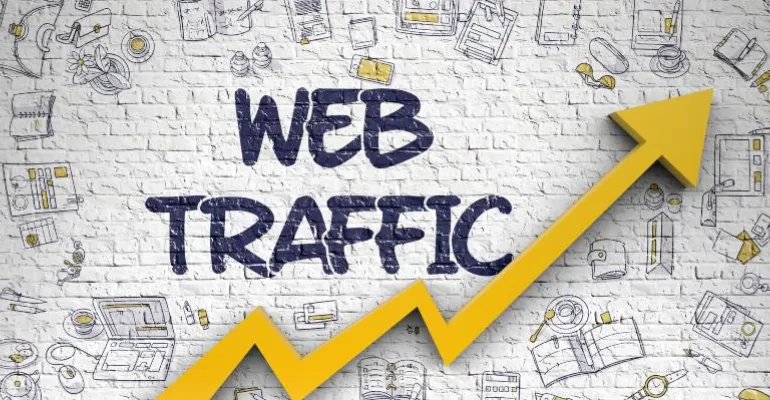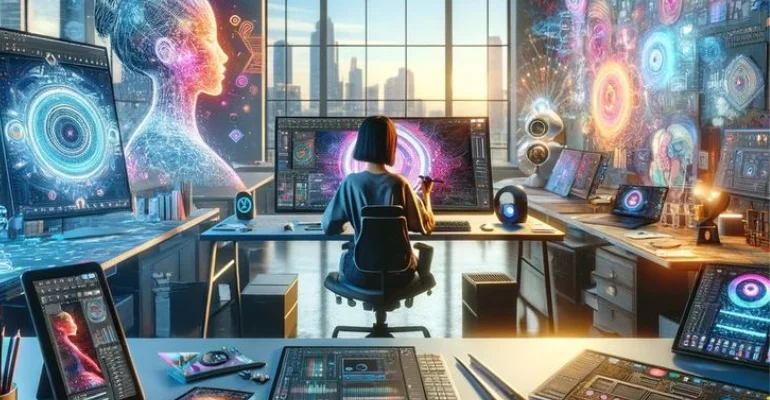In the digital era, where every business strives to stand out in the crowded marketplace, the emergence of artificial intelligence (AI) has become a game-changer in brand promotion. AI’s ability to analyze vast amounts of data from websites and social media platforms has opened up new avenues for businesses to refine their brand positioning strategies, leading to more targeted and effective marketing campaigns. This article delves into how AI is transforming the landscape of brand promotion, highlighting its potential to revolutionize digital marketing.
AI: The Catalyst for Personalized Marketing
AI technology is at the forefront of digital marketing, offering a myriad of ways to enhance brand promotion. One of the most significant impacts of AI is its ability to personalize content based on customer browsing behavior, demographics, and preferences. This personalization allows marketers to tailor content, offers, and ads, thereby improving the user experience and boosting conversion rates .
Chatbots: The Digital Marketing Support System
Chatbots powered by AI are becoming an indispensable tool in digital marketing campaigns. They not only provide personalized customer support but also gather valuable data for lead generation and analysis. This dual functionality enhances engagement and customer satisfaction, making chatbots a critical component of AI-driven marketing strategies .
Insights from Data: The Power of Machine Learning
Machine learning algorithms, a subset of AI, are revolutionizing the way businesses understand their customers. By analyzing vast amounts of data from social media, website analytics, and customer feedback, these algorithms provide invaluable insights that can guide marketing strategies and enhance customer relationships .
AI-Powered Content Creation: Elevating Engagement
AI-powered content creation tools are leveraging data and user preferences to generate more engaging and relevant content. This not only boosts campaign performance but also saves marketers time, ensuring that content is not only quantity but quality, thereby improving audience engagement and search engine rankings .
Enhancing Visual Marketing with AI
In the realm of images and videos, AI’s ability to identify objects, people, and other elements enables automated tagging, personalization, and search functionality. This capability significantly enhances the visual aspects of digital marketing, making content more accessible and engaging for users .
Fraud Detection and Prevention
AI algorithms excel in detecting anomalies and using predictive modeling to analyze text-based data, monitor real-time activity, and assign fraud scores. This capability is crucial for businesses to identify and prevent fraud in digital marketing activities, ensuring the integrity of their marketing campaigns .
The Future of AI in Brand Promotion
The integration of AI in digital marketing is reshaping the way businesses engage with their audiences. It’s about crafting intelligent campaigns, establishing authentic connections, and laying the foundation for a future where marketing is more efficient, effective, and personalized than ever before .
AI’s ability to process data in real-time, predict consumer behavior, and personalize content and recommendations is set to transform digital marketing strategies. From enhancing the customer journey with AI-powered chatbots to automating marketing processes and optimizing ad targeting, AI is poised to become the star player in the future of marketing .
Enhancing SEO and SEM Strategies with AI
In the competitive landscape of digital marketing, SEO and SEM are crucial for increasing visibility and attracting targeted traffic. AI technologies offer innovative ways to enhance these strategies so that your content and ads reach the right audience at the right time. AI can analyze large volumes of data to provide insights that inform strategy, such as identifying trends, customer preferences, and effective channels. This data-driven approach allows marketers to optimize their SEO and SEM strategies, ensuring that their content and ads are more likely to resonate with their target audience .
Integrating AI in Digital Marketing: A Practical Guide
AI in digital marketing is not just a buzzword, but a fundamental shift in how brands interact with their audiences. This technology offers the potential to analyze data at scale, personalize customer experiences, and automate repetitive tasks, thereby increasing efficiency and delivering more targeted and, therefore, effective marketing strategies. The best part is that these tools and strategies are not just for the tech giants – they are accessible to businesses of all sizes, enabling them to compete against bigger brands .
How to Integrate AI in Digital Marketing
– Use AI for Customer Insights: Employ AI-driven analytics tools to analyze customer behavior and preferences. This can help in segmenting the audience and personalizing marketing messages.
– Implement Chatbots for Customer Service: Integrate AI-powered chatbots on your website or social media channels to provide instant customer support and engage users with personalized messaging.
– Leverage AI for Content Creation: Use AI tools that assist in content creation, such as generating article ideas, creating drafts, or optimizing content for SEO.
– Personalize Email Marketing: Use AI to personalize email campaigns based on user behavior, ensuring that recipients receive relevant content and offers.
– Optimize Digital Ads with AI: Implement AI in programmatic advertising to automate ad buying, optimize bidding strategies, and target ads more effectively.
– Enhance SEO and SEM: Apply AI for keyword research, competitive analysis, and optimizing website content to improve search engine rankings and ad performance .
AI Marketing Strategy Example
An example of an AI marketing strategy could be a personalized shopping experience for an e-commerce retailer:
– Customer Data Analysis: Using AI to analyze customer purchase history, browsing behavior, and social media interactions.
– Personalized Recommendations: Implementing AI algorithms to provide personalized product recommendations on the website, in email marketing, and through social media ads.
– Predictive Targeting: Using AI to predict which customers are most likely to be interested in new products based on their past behavior and demographics.
– Chatbots for Engagement: Deploying AI-powered chatbots on the website to answer customer queries, offer personalized suggestions, and assist with the shopping process.
– Automated Email Campaigns: Using AI to automate and personalize email marketing campaigns, sending customers tailored offers and content at the optimal time .
Conclusion: Embracing AI in Digital Marketing
The integration of AI into digital marketing represents not just a technological advancement, but a paradigm shift in how we approach marketing in the digital age. As we’ve explored, AI can enhance personalized customer experiences, revolutionize content creation and curation, provide deep insights through data analysis, transform customer service with chatbots, and optimize SEO and SEM strategies. The power of AI lies in its ability to process vast amounts of data at incredible speeds, providing actionable insights and automating tasks that would be impossible or impractical for humans to perform. This allows marketers and businesses to focus on strategy and creativity, while AI handles the heavy lifting of data analysis and routine tasks. As marketers, our task is to continually adapt to new technologies and trends. The future of digital marketing is AI-driven, and the opportunities for growth and innovation are boundless .














